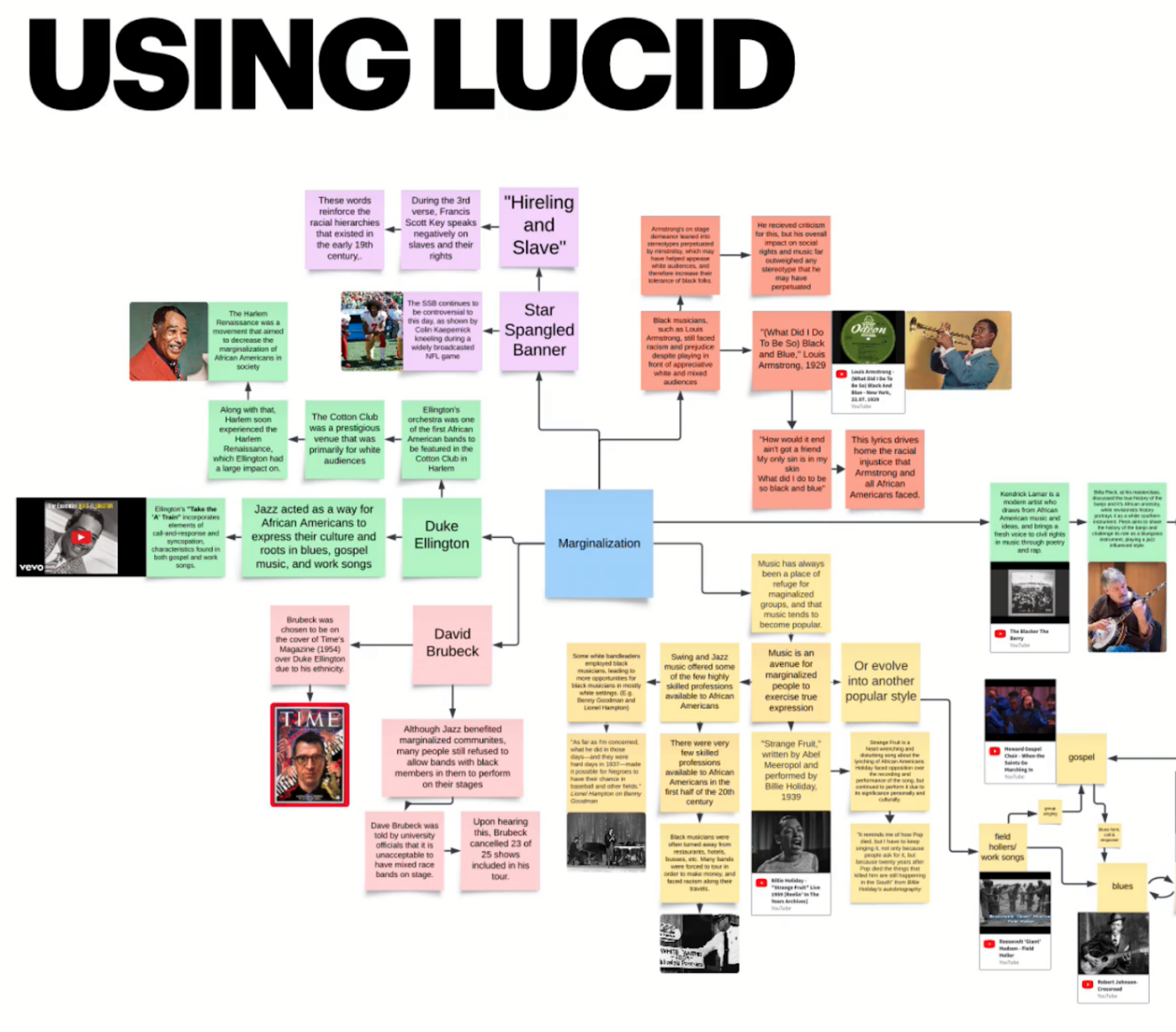Professor Highlight | Laurence Kaptain
Instructor | College of Arts & Media | University of Colorado Denver
Video: Laurence shares how he uses Lucid
Template: Consensus Building
Template: Concept Mapping

Detailed Walkthrough
Laurence used Lucid in his US Music: societal and political impact course. He used Lucid to help students develop critical analysis skills and to cultivate transferable skills. For example, making concept maps is a skill that can be applied in personal life, professional careers, job searches, and so on.
Students explore the historical and social context of U.S. music and cultural diversity by using concept maps. He has a live class with 48 students and an online class with 30 students. Lucid worked well in both, and he especially liked the use of Lucid in the online class because the typically students really struggle to have community and to work with other students in n online course, but collaborating in Lucid really gets them out of their shell.
He started by introducing Lucid and concept mapping to his students. Then, students started using Lucid to make simple concept maps independently. He gave the students a simple concept map template to complete.
Next, he assigned students randomly in pairs to look at each other's concept maps and note similarities and differences using the interactive framework below.
Then, he had the students make a co-submission of a concept map based on one or more of the five core schools. They submit their work for review and feedback before making their final submission.
Pro Tip: Laurence has students add a variety of items to the board such as images, video clips, and sound clips. This enhances the final product and helps students better illustrate what they are learning in class.

